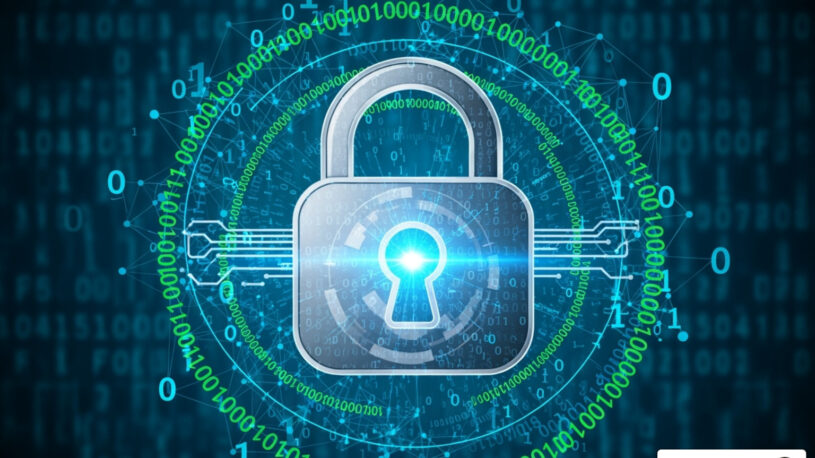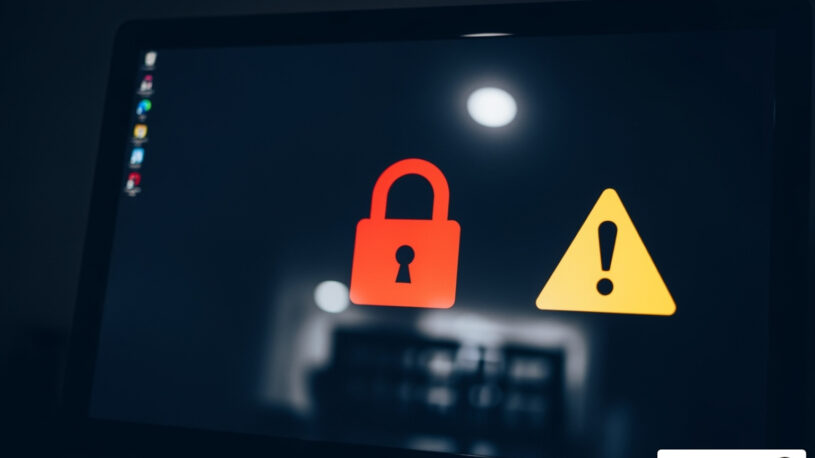

San Antonio Cybersecurity: Understanding the Anatomy of APT Attacks
An Advanced Persistent Threat (APT) is a highly sophisticated and prolonged cyberattack that aims to steal sensitive data over an extended period. These attacks are carefully planned, evading typical security measures, and often target high-value organizations for various purposes such as cyber espionage, financial gain, hacktivism, or sabotage. Businesses investing in robust San Antonio cybersecurity strategies are better equipped to defend against these targeted threats.
Below, we’ll extensively cover:
- The characteristics and techniques used in APT attacks
- The lifecycle stages of APT attacks
- Examples of notable APT groups
- Tools and technologies for detection and response
- Best practices for protection against APTs
- The role of threat intelligence in combating APTs effectively
The Characteristics and Techniques of APT Attacks
Advanced Persistent Threats stand apart from common cyberattacks by their distinct characteristics of advanced persistent threats and unique operational methods. These campaigns are not opportunistic but involve meticulous planning tailored to specific high-value targets. Attackers invest significant time researching the target’s infrastructure, personnel, and vulnerabilities before launching an attack, often leveraging expertise from specialized teams like a San Antonio IT help desk to simulate and strengthen defenses.
Features of APTs include:
- Multiple infiltration methods: APT groups employ various vectors simultaneously or sequentially to gain initial access. This can involve spear-phishing emails, exploiting zero-day vulnerabilities, or supply chain compromises.
- Prolonged presence: Unlike quick, destructive attacks, APTs maintain a persistent foothold within the network for months or years. This persistence allows them to continuously gather intelligence without raising alarms.
- Evasion techniques: Use of encryption, stealthy malware variants, and legitimate system tools help attackers remain undetected by traditional defenses.
- Multiple points of compromise: Attackers often establish several backdoors or implants across different network segments for continuous access, despite remediation efforts.
The sophistication behind these threats is illustrated by the common techniques employed:
- Social engineering and spear-phishing: Highly targeted phishing campaigns deceive specific individuals with carefully crafted messages mimicking trusted sources. These emails often carry malicious attachments or links designed to install malware or steal credentials.
- Zero-day exploits: Attackers leverage unknown vulnerabilities in software to bypass security controls before patches are available. Zero-days give immediate unauthorized access with minimal detection risk.
- Credential harvesting: Once inside, attackers capture passwords and authentication tokens through keyloggers, memory scraping, or phishing internal users. Obtaining valid credentials enables lateral movement within the network.
- Malware deployment including backdoor Trojans: Custom-built malware provides command-and-control channels for remote control. Backdoor Trojans create hidden entry points allowing persistent access while avoiding endpoint security solutions.
Understanding the Lifecycle Stages of an APT Attack with San Antonio Cybersecurity Insights
Advanced Persistent Threats follow a structured sequence of actions designed to infiltrate, expand control, extract valuable data, and maintain long-term access within targeted networks. Knowing these four main APT attack stages is integral for timely detection and effective response.
1. Infiltration
The infiltration stage in APT attacks involves gaining initial access to the target network. Attackers often use spear-phishing emails with malicious attachments or links, exploiting human vulnerabilities. Other tactics include leveraging zero-day exploits or supply chain compromises to bypass defenses silently. Once inside, attackers establish footholds by deploying backdoor Trojans or remote access tools (RATs), enabling covert entry.
2. Exploration and Expansion
After successful infiltration, attackers conduct reconnaissance to map out the network environment. They identify critical assets such as intellectual property servers, databases, and privileged accounts. Lateral movement techniques come into play here:
- Credential harvesting from compromised accounts
- Exploiting trust relationships between systems
- Using legitimate administrative tools to avoid detection
This phase focuses on expanding control across multiple systems, increasing persistence and gathering intelligence to plan the exfiltration of sensitive data.
3. Exfiltration
Exfiltration marks the stage where attackers transfer stolen data out of the organization. Data is often compressed, encrypted, or disguised as normal traffic to evade monitoring systems. Attackers may use cloud storage services or compromised third-party infrastructure as intermediaries to mask the destination of exfiltrated data.
Unusual outbound traffic patterns or aggregated data moving to unfamiliar locations serve as potential indicators during this phase. Businesses can strengthen monitoring by working with experienced San Antonio cybersecurity professionals who understand how to detect and disrupt exfiltration attempts early.
4. Maintenance
Maintaining persistent access ensures attackers can return even if parts of their presence are discovered and removed. Techniques include installing secondary backdoors, hiding malware components deeply within system files, and continuously updating tools to evade detection by security solutions.
Recognizing Signs of an Advanced Persistent Threat Attack
- Unusual user behavior, such as unauthorized access attempts or unusual data retrieval patterns, could indicate a compromised network.
- Spikes in backdoor Trojan detections may signal ongoing infiltration attempts by threat actors.
- Abnormal outbound data flows or sudden movements of aggregated data to unexpected locations could suggest exfiltration activities by attackers seeking to steal sensitive information.
Tools and Technologies for Detecting and Responding to APTs
Detecting and responding to Advanced Persistent Threats requires sophisticated tools that provide deep visibility into endpoint activity and network behavior. One of the most effective solutions is CrowdStrike’s Falcon Insight Endpoint Detection and Response (EDR). This platform specializes in identifying Indicators of Attack (IOAs)—patterns of malicious behavior that signal an ongoing attack before data loss occurs. Unlike traditional antivirus, Falcon Insight focuses on behavioral analytics, enabling it to catch stealthy APT tactics such as lateral movement or privilege escalation.
Key capabilities of Falcon Insight EDR include:
- Continuous monitoring of endpoints to detect suspicious activities
- Real-time threat hunting and incident response support
- Automated prevention of attacks by blocking identified threats proactively
Security Information and Event Management (SIEM) platforms complement endpoint detection by aggregating logs and events from diverse sources across the IT environment. SIEM systems analyze this data to find Indicators of Compromise (IOCs) like unusual login patterns, unexpected file changes, or communication with known malicious IP addresses. These insights empower security teams to correlate seemingly isolated events into a comprehensive picture of APT activity.
Together, endpoint detection solutions like Falcon Insight EDR and SIEM platforms form a vital defense layer. They enhance early detection capabilities, reduce dwell time for attackers, and improve the speed and accuracy of incident response efforts against advanced persistent threats.
Best Practices for Protecting Your Business Against APT Attacks
1. Implement Timely Patching/Updating
Regularly update and patch software to address vulnerabilities exploited by zero-day attacks. This practice helps close security gaps and reduces the risk of infiltration by APT groups. Equally important is maintaining secure data backups in San Antonio, giving organizations a safety net to restore operations if attackers manage to breach defenses.
2. Employ Continuous Real-Time Monitoring
Utilize advanced monitoring tools to track network traffic for any suspicious patterns or anomalies. Real-time monitoring enhances threat detection capabilities, allowing for swift responses to potential threats.
3. Conduct Regular Penetration Testing
Perform routine penetration tests to evaluate the effectiveness of your security measures. These tests simulate real-world attack scenarios, helping you identify weaknesses in your defenses and fortify them proactively.
4. Adopt Zero Trust Principles
Embrace a Zero Trust security model that ensures strict access controls with least privilege access and multi-factor authentication. By implementing this approach, you minimize the risk of unauthorized access and lateral movement within your network.
The Role of Threat Intelligence and Human-Led Threat Hunting in Combating APTs
Advanced Persistent Threats are designed to evade traditional defenses, making detection a significant challenge. This is where threat intelligence becomes an asset in your cybersecurity arsenal. By integrating automated threat intelligence feeds with endpoint protection platforms, you gain enhanced visibility into emerging threats and attacker behaviors. Automated systems analyze Indicators of Attack (IOAs) and Indicators of Compromise (IOCs) collected from diverse sources, enabling faster identification of suspicious activities before they escalate.
How Automated Threat Intelligence Boosts Detection
- Real-time updates: Constant ingestion of new threat data ensures your defenses keep pace with evolving APT tactics.
- Contextual awareness: Correlation of threat actor profiles, malware signatures, and attack patterns helps prioritize alerts that truly matter.
- Preventive blocking: EDR tools can automatically quarantine or block malicious activity based on known threat intelligence.
Despite automation strengths, some APT attacks employ sophisticated evasion techniques that mimic normal network behavior or use novel exploits unknown to signature-based systems. This limitation highlights theimportance of human-led threat hunting as a complementary approach.
Why Human-Led Managed Threat Hunting Matters
Threat hunters leverage experience, intuition, and hypothesis-driven investigation to dig deeper into anomalies overlooked by automated tools. Their work includes:
- Proactively searching for stealthy threats hiding within endpoints or networks.
- Analyzing unusual user behaviors or lateral movement patterns that may indicate compromise.
- Validating and enriching automated detections with contextual insights to reduce false positives.
Managed threat hunting services provide continuous 24/7 monitoring by skilled analysts who understand APT attack methodologies intimately. They adapt quickly to emerging threats and tailor investigations based on your organization’s unique risk profile.
Combining automated threat intelligence integration with persistent human-led hunting forms a robust defense strategy against APTs. This synergy improves detection speed, accuracy, and ultimately strengthens your organization’s resilience to these cyber threats.
Your Proactive Defense: The Key to Conquering APTs
Organizations should adopt a multi-layered security strategy that includes:
- Patch management: Timely updates to close vulnerabilities exploited by APTs.
- Zero Trust architecture: Implement strict access controls and multi-factor authentication.
- Threat intelligence integration: Enhance detection capabilities through automated tools.
- Human expertise via managed hunting services: Essential for identifying stealthy threats missed by automated solutions.
Being watchful and acting quickly is vital in reducing damage caused by advanced enemies. It’s important to remember that being proactive and ready is the key to protecting your business from these ongoing threats.
Frequently Asked Questions About APTs
What is an Advanced Persistent Threat (APT) and why is it significant in cybersecurity?
An Advanced Persistent Threat (APT) is a sophisticated cyberattack characterized by meticulous planning, multiple infiltration methods, and prolonged presence within a target network. APTs are significant because they pose serious risks to organizations by stealthily stealing sensitive data over extended periods.
What are the key characteristics and common techniques used in APT attacks?
APTs differ from other cyberattacks through their persistence, use of social engineering like spear-phishing, zero-day exploits, credential harvesting, and deployment of malware such as backdoor Trojans. These traits enable attackers to maintain long-term access and evade detection.
Can you explain the lifecycle stages of an APT attack?
The lifecycle of an APT attack includes four main stages: Infiltration (gaining initial access), Exploration and Expansion (mapping and moving within the network), Exfiltration (stealing data), and Maintenance (ensuring continued access). Understanding these stages helps organizations detect and respond effectively to APTs.
What signs might indicate an ongoing Advanced Persistent Threat attack?
Indicators of an active APT attack include unusual user behavior or account activity, spikes in backdoor Trojan detections, abnormal outbound data flows, and unexpected aggregation or movement of sensitive data. Early recognition of these signs is critical for timely response.
How can businesses protect themselves against Advanced Persistent Threats?
Effective protection involves implementing timely patching to close vulnerabilities, continuous real-time monitoring of network traffic, regular penetration testing, and adopting Zero Trust principles with strict access controls and multi-factor authentication. Having reliable tech support in San Antonio TX ensures these processes are executed efficiently, helping to minimize exposure to APT attacks.
What role do threat intelligence and human-led threat hunting play in combating APTs?
Integrating automated threat intelligence with endpoint protection enhances detection capabilities by identifying Indicators of Attack. Human-led managed threat hunting complements this by uncovering stealthy threats that automated tools might miss, while proactive San Antonio IT consulting helps organizations continually improve security strategy. Additionally, performing consistent data backups in San Antonio safeguards critical information, making recovery possible even after a sophisticated breach.
Table of Contents









